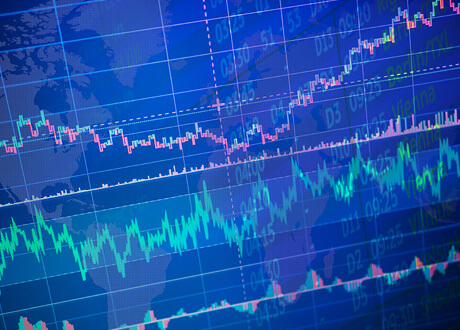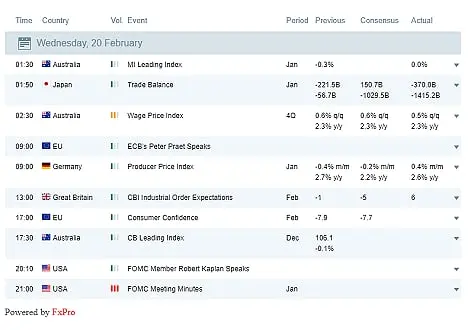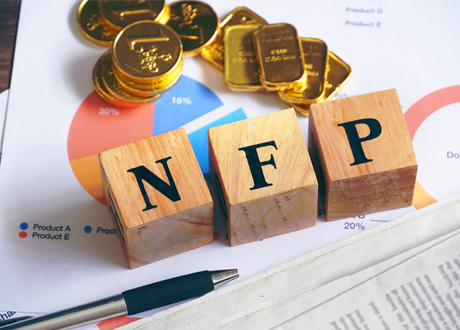
Fundamental Analysis (Part 1)
Understand the basics with our interactive market course.
What Is Fundamental Analysis?
Traders are always trying to figure out where the market is headed. But to get the most accurate picture, it’s not just about watching price movements on a chart, you also need to stay updated on global developments. Fundamental analysis plays a crucial role in this process.
Major events like a president’s speech or the release of weak economic data can significantly impact a country’s currency.
You’ve probably heard statements such as: “The pound dropped after the latest news…” or “The euro rose sharply against the dollar following new reports…”. These phrases are commonly used by market analysts when providing fundamental insights and market updates.

What is fundamental analysis
If a well-known company reports poor earnings and makes less profit than expected, investors may lose confidence. As a result, people start selling the company’s shares, and the share price begins to drop.
For example, if there’s a long rainy season in the U.S., it can damage the cotton harvest. With less cotton available, the price may rise sharply.
These kinds of real-world events have a strong impact on the markets. This is what we call fundamental analysis - studying news, reports, and global events to understand how they might affect prices.

To understand how prices might move, traders should watch for the following events:
- Economic, political, and social events happening around the world.
- The market’s overall mood or outlook toward a specific country’s economy.
- Natural disasters like earthquakes, hurricanes, or severe weather that can cause serious damage.
- Wars or conflicts between major countries.
- Political events such as elections, referendums, or major international meetings.
The release of important economic data, like job numbers, inflation rates, or GDP figures from a country or specific industry.

Natural Disasters
Natural disasters include extreme weather events like floods, earthquakes, hurricanes, and tsunamis. These events often cause serious damage, including loss of life, destruction of buildings and roads, and fear among the population.
Such disasters can harm a country’s economy because the government needs to spend a large amount of money on recovery. This usually weakens the country’s currency.
For example, after the massive earthquake and tsunami in Japan in 2011, which caused around 15,000 deaths and thousands of injuries, the Japanese yen fell by 0.4% against the US dollar.

Military Conflicts
When countries are involved in war or military conflict, they need to spend a lot of money on weapons, cover damages, support their armies, and manage public fear and uncertainty. All of this puts pressure on the country’s economy.
As a result, long-lasting conflicts often create strong market volatility and can cause the national currencies of those countries to lose value.

Political Factors
One of the most important political events is a presidential election. Elections often cause high market volatility, especially if there is a chance of a major change in government. Political uncertainty like this can lead to a drop in the value of the national currency.
Other important political events include public statements from leaders after meetings, sudden policy changes, scandals, international sanctions, conflicts, and the results of negotiations between countries.

Economic Indicators
One of the main tools for professional traders is the Economic Calendar. This calendar shows when important economic reports will be published. As soon as the actual data is released, it appears in the calendar’s last column. You can also see the time of release, the name of the indicator, a short description, the previous result, and the forecast.
Some economic indicators are especially important as they are marked in the calendar with three exclamation marks (!!!). These are the ones traders pay the most attention to:
- Central Bank interest rate decision
- Nonfarm Payrolls (NFP)
- Unemployment rate
- Consumer Price Index
- Gross Domestic Product (GDP)

How do economic indicators affect price movements?
To understand this, let’s take the Nonfarm Payrolls (NFP) report from the United States as an example. This monthly report shows the change in the number of employed people (excluding the agricultural sector) during the previous month.
When the data shows higher-than-expected job growth, it is generally seen as positive for the US dollar (USD). More employment suggests stronger consumer spending, higher economic activity, and increased investor confidence, factors that typically boost the value of the USD.
On the other hand, if the data comes in below expectations, it may signal a weakening economy. This often causes the USD to decline in value, as lower job creation may reduce consumer spending and investor optimism.

Macroeconomic News Impact
Typically, macroeconomic indicators don’t impact just a single asset, they can affect several at the same time.
For instance, while Nonfarm Payrolls (NFP) is directly related to the US economy, it also influences the movement of other currencies like the British pound (GBP) and the euro (EUR). This happens because both the GBP/USD and EUR/USD currency pairs involve the US dollar, so any major news affecting the USD can cause price movements in those pairs as well.

Risk Warning: Before you start trading with leverage, ensure that you understand the associated risks and possess a sufficient level of knowledge
We do not serve customers from the USA and Iran



.svg)